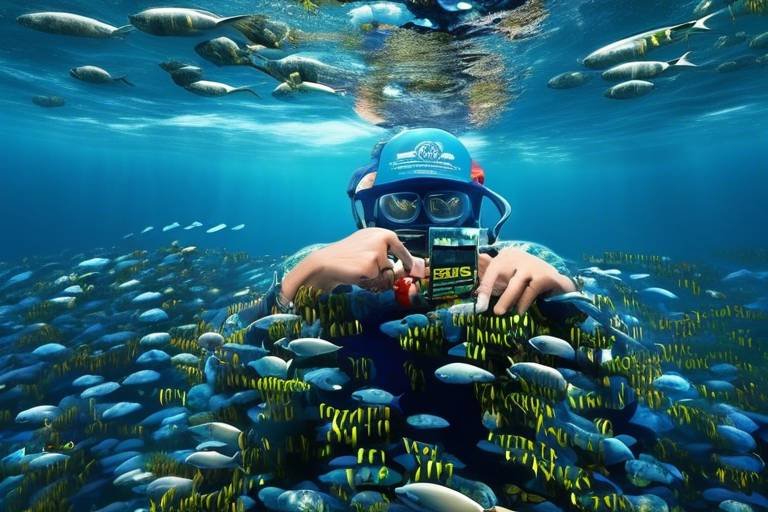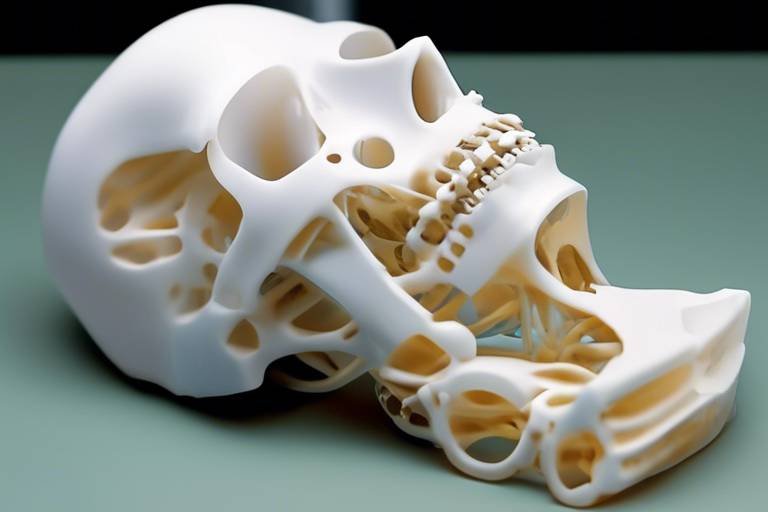Future Trends in Marine Conservation Technologies
As we stand on the brink of an environmental revolution, the future of marine conservation is becoming increasingly intertwined with cutting-edge technology. The oceans, which cover over 70% of our planet, are facing unprecedented threats from climate change, pollution, and overfishing. Fortunately, innovative technologies are emerging that promise to reshape the landscape of marine conservation. These advancements not only aim to protect our precious marine ecosystems but also enhance our understanding of the complex interactions within them.
Imagine a world where drones soar above the waves, capturing real-time data from the ocean's surface, while underwater robots explore the depths, gathering vital information about marine life. This is not just a dream; it is the reality we are moving towards. Technologies like satellite imagery, machine learning, and biotechnology are revolutionizing how we monitor and protect our oceans. The potential impacts of these tools are profound, offering new ways to address age-old challenges in marine conservation.
However, with great power comes great responsibility. The integration of technology into conservation efforts is not without its challenges. Issues such as data privacy, the cost of implementation, and the need for skilled personnel to operate these technologies must be addressed. Moreover, the ethical implications of using AI and genetic engineering in conservation efforts raise important questions about the role of humans in nature. As we navigate these complexities, it is crucial to engage with local communities and stakeholders to ensure that technological advancements serve the greater good.
In the following sections, we will explore some of the most exciting trends in marine conservation technologies. From the use of artificial intelligence to analyze vast datasets, to biotechnological innovations aimed at restoring coral reefs, these advancements are set to play a pivotal role in shaping the future of our oceans. Join us as we dive deeper into the world of marine conservation technologies and discover how they can help us protect the blue heart of our planet.
- What are marine conservation technologies?
Marine conservation technologies refer to innovative tools and methods used to monitor, protect, and restore marine ecosystems. These include drones, underwater robots, artificial intelligence, and biotechnology. - How can technology help in marine conservation?
Technology enhances data collection, improves monitoring capabilities, and provides insights that inform conservation strategies. This leads to more effective protection and restoration of marine habitats. - Are there any challenges associated with using technology in marine conservation?
Yes, challenges include the cost of technology, the need for skilled personnel, data privacy concerns, and ethical implications of using AI and genetic engineering. - What role do communities play in marine conservation?
Local communities are vital to the success of conservation efforts. Engaging them through technology, such as citizen science initiatives and educational platforms, promotes stewardship and awareness.
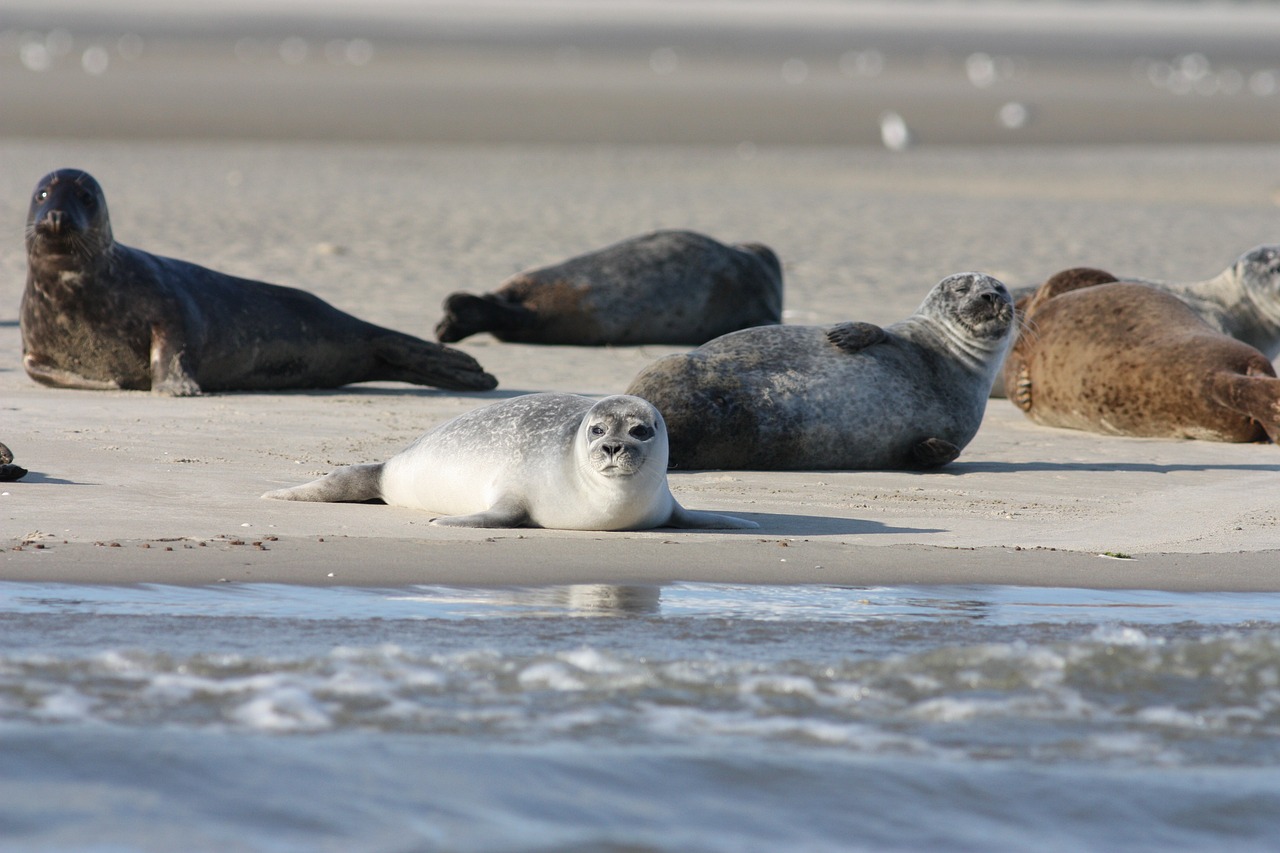
Emerging Technologies in Marine Monitoring
In recent years, the field of marine monitoring has undergone a remarkable transformation, thanks to emerging technologies that are changing the way we observe and understand our oceans. Traditional methods of monitoring marine ecosystems often relied on manual surveys and limited data collection techniques, which could be both time-consuming and inefficient. However, with the advent of advanced tools such as drones, underwater robots, and satellite imagery, we are now able to gather vast amounts of data with unprecedented speed and accuracy.
Drones, for instance, have become invaluable for marine monitoring. They allow researchers to survey large areas of coastline and open water quickly, capturing high-resolution images that can reveal critical information about habitat conditions and wildlife populations. These aerial perspectives can help identify changes in coastal erosion, coral reef health, and even the presence of marine debris, which is crucial for effective conservation efforts.
Underwater robots, or ROVs (Remotely Operated Vehicles), are another exciting development in marine monitoring technology. These machines can dive deep into the ocean, reaching depths that are often inaccessible to human divers. Equipped with cameras and sensors, ROVs can collect data on underwater ecosystems, monitor fish populations, and assess the health of coral reefs. This technology not only enhances our understanding of marine environments but also allows for real-time data collection, which is vital for making informed conservation decisions.
Moreover, the integration of satellite imagery has revolutionized marine monitoring by providing a global perspective on ocean conditions. Satellites can track changes in sea surface temperatures, chlorophyll concentrations, and even the movement of marine species. This comprehensive data helps scientists understand the broader impacts of climate change and human activity on marine ecosystems. For example, by analyzing satellite data, researchers can identify areas of high fishing activity or regions affected by harmful algal blooms, enabling targeted conservation efforts.
As we harness these emerging technologies, it's essential to consider the challenges that come with them. For instance, the cost of deploying advanced monitoring systems can be significant, and there may be a steep learning curve for researchers to effectively use these tools. Additionally, concerns about data privacy and the potential for misuse of information must be addressed to ensure that the benefits of these technologies are realized responsibly.
In summary, the integration of drones, underwater robots, and satellite imagery into marine monitoring is not just enhancing our ability to collect data; it's fundamentally changing the way we understand and protect our oceans. As we continue to innovate and refine these technologies, we can look forward to a future where marine conservation is driven by data, enabling us to make more informed decisions that benefit both marine ecosystems and the communities that depend on them.
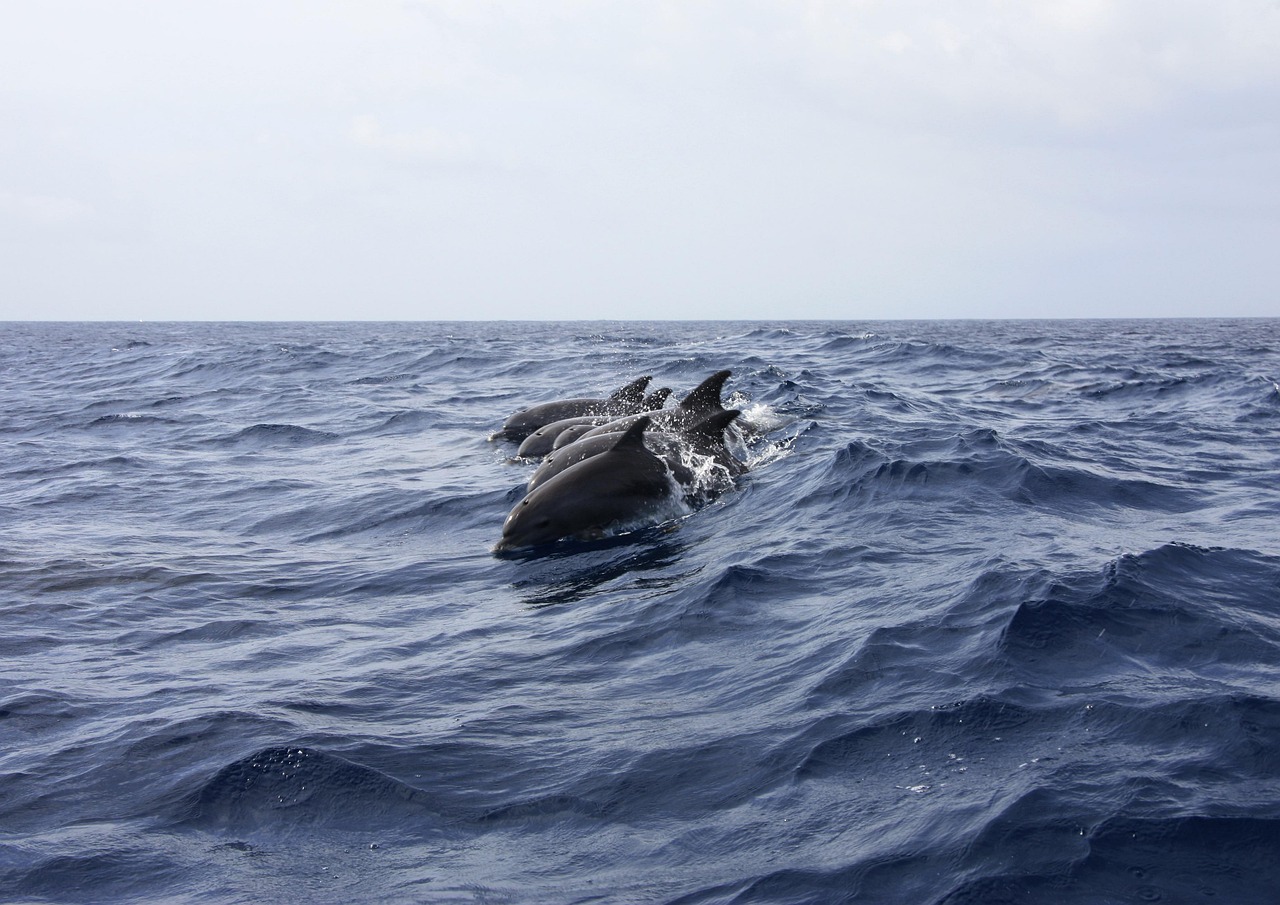
Artificial Intelligence in Conservation Efforts
Artificial intelligence (AI) is transforming the landscape of marine conservation in remarkable ways. Imagine having a super-smart assistant that can sift through mountains of data faster than you can say "ocean conservation." That's exactly what AI brings to the table. By analyzing vast datasets, AI can identify trends and patterns that human eyes might miss. This capability is crucial for developing effective conservation strategies that can adapt to the ever-changing conditions of our oceans.
One of the most exciting applications of AI in marine conservation is its ability to predict fish populations. With the help of machine learning algorithms, scientists can analyze historical data on fish stocks, environmental conditions, and fishing practices. This analysis allows them to forecast future populations, enabling sustainable fishing practices that protect marine biodiversity. For instance, if AI predicts a decline in a certain fish species, conservationists can take proactive measures to mitigate overfishing.
Machine learning, a subset of AI, is particularly adept at making sense of complex ecological data. By training algorithms on existing datasets, researchers can create predictive models that inform habitat health assessments. These models provide critical insights into the factors affecting marine ecosystems, such as pollution levels, climate change impacts, and human activities. For example, a recent study utilized machine learning to assess the health of coral reefs, revealing areas that required immediate attention for restoration efforts.
AI-driven data analysis is not just about understanding ecosystems; it’s also about protecting vulnerable species. By identifying at-risk species through advanced algorithms, conservationists can prioritize their protection efforts. This targeted approach ensures that resources are allocated efficiently, maximizing the impact of conservation initiatives. For instance, if AI identifies a decline in a specific turtle species, conservationists can focus on creating protected areas or implementing breeding programs to boost their populations.
As climate change continues to pose a significant threat to marine environments, predictive analytics becomes an essential tool for conservationists. By forecasting the impacts of climate change on marine ecosystems, AI helps organizations develop proactive strategies to mitigate damage. For example, predictive models can simulate how rising sea temperatures will affect coral bleaching events, allowing conservationists to implement measures that enhance coral resilience. Understanding these future scenarios empowers us to act now, safeguarding marine habitats for generations to come.
In addition to data analysis, AI is enhancing monitoring capabilities through automated surveillance systems. Underwater cameras and acoustic sensors equipped with AI can provide real-time data on marine life and human activities. These systems can track illegal fishing and poaching, acting as the ocean's watchful guardians. By analyzing the data collected from these systems, conservationists can respond swiftly to threats, ensuring that marine resources are protected.
In summary, the integration of artificial intelligence into marine conservation efforts is nothing short of revolutionary. From predicting fish populations to enhancing species protection and monitoring, AI is equipping conservationists with powerful tools to tackle the challenges facing our oceans. As we continue to harness these technologies, we can foster a more sustainable relationship with our marine ecosystems, ensuring their health and vitality for years to come.
- What role does AI play in marine conservation? AI helps analyze data, predict trends, and enhance monitoring efforts, making conservation strategies more effective.
- How does machine learning contribute to fish population predictions? Machine learning analyzes historical data to forecast future populations, helping to promote sustainable fishing practices.
- Can AI help protect endangered species? Yes, AI can identify at-risk species and prioritize conservation efforts to ensure their protection.
- What are automated surveillance systems? These are AI-equipped cameras and sensors that monitor marine life and human activities in real-time.
- How can predictive analytics aid in climate change mitigation? Predictive analytics forecasts the impacts of climate change, allowing for proactive measures to protect marine ecosystems.

Machine Learning Applications
In the rapidly evolving field of marine conservation, machine learning is emerging as a game-changer. Imagine having the ability to predict fish populations or assess the health of marine habitats with just a few clicks! This is not science fiction; it is the reality brought forth by advanced algorithms that can analyze vast datasets far more efficiently than any human could. By leveraging historical data, machine learning models can uncover patterns that help conservationists make informed decisions about resource allocation and management strategies.
One of the most exciting applications of machine learning in marine conservation is its ability to predict fish populations. By analyzing factors such as water temperature, salinity, and historical catch data, machine learning algorithms can forecast changes in fish stocks. This predictive capability is vital for sustainable fishing practices, as it allows fisheries to adjust their quotas based on real-time data rather than outdated estimates. For instance, a study conducted by marine biologists found that using machine learning models improved fishery management outcomes by over 30% compared to traditional methods.
Moreover, machine learning is pivotal in assessing the health of marine habitats. By processing satellite imagery and underwater photos, these algorithms can detect changes in coral reefs, seagrass beds, and other crucial ecosystems. For example, researchers have developed models that can identify areas of coral bleaching by analyzing color patterns in images captured from drones. This not only helps in monitoring the current state of marine environments but also aids in planning restoration efforts more effectively.
Another fascinating aspect of machine learning applications is its role in species protection. Using AI-driven data analysis, conservationists can identify at-risk species by examining various ecological factors. When combined with geographic information systems (GIS), machine learning can highlight regions where endangered species are most vulnerable, allowing for targeted conservation actions. This focused approach ensures that resources are allocated efficiently, maximizing the impact of conservation efforts.
Furthermore, machine learning algorithms are increasingly being used in climate change research. Predictive analytics can forecast how rising sea temperatures and acidification will affect marine ecosystems. By understanding these potential impacts, conservationists can implement proactive measures to mitigate damage and enhance the resilience of vulnerable habitats. For instance, a recent study utilized machine learning to model the future distribution of marine species under different climate scenarios, providing crucial insights for long-term conservation planning.
In summary, the applications of machine learning in marine conservation are vast and varied. From predicting fish populations to assessing habitat health and protecting endangered species, these technologies are reshaping how we approach the challenges facing our oceans. As we continue to innovate and refine these tools, the potential for impactful conservation strategies grows exponentially, offering hope for the future of our marine ecosystems.
- What is machine learning in marine conservation?
Machine learning involves using algorithms to analyze data and identify patterns, which can significantly enhance conservation strategies. - How does machine learning predict fish populations?
By analyzing historical data and environmental factors, machine learning models can forecast changes in fish stocks, helping to inform sustainable fishing practices. - Can machine learning help protect endangered species?
Yes, machine learning can identify at-risk species and prioritize conservation efforts by analyzing ecological data. - What role does machine learning play in climate change research?
Machine learning models can predict how climate change will impact marine ecosystems, allowing for proactive conservation measures.

Data Analysis for Species Protection
In the realm of marine conservation, data analysis has emerged as a game-changer, particularly when it comes to protecting vulnerable species. By harnessing the power of advanced analytics, conservationists can sift through vast amounts of data to identify at-risk species and understand the factors contributing to their decline. Imagine trying to find a needle in a haystack; that’s what it used to be like for scientists trying to pinpoint which species needed immediate attention. Now, with sophisticated algorithms and data processing tools, they can quickly and efficiently uncover critical insights that guide conservation efforts.
One of the key advantages of utilizing data analysis is the ability to prioritize species based on various risk factors, such as habitat loss, climate change, and human activities. For instance, by analyzing historical population trends alongside environmental data, researchers can create a comprehensive profile of a species' health and viability. This targeted approach not only ensures that resources are allocated efficiently but also maximizes the impact of conservation initiatives. In essence, it’s about working smarter, not harder.
Moreover, the integration of machine learning techniques into data analysis allows for even deeper insights. These algorithms can identify patterns that might not be immediately obvious to human analysts. For example, researchers can use machine learning to analyze acoustic data from underwater microphones, detecting the presence of specific species based on their unique vocalizations. This method not only aids in monitoring populations but also helps in understanding their behaviors and interactions within the ecosystem.
To illustrate the effectiveness of data analysis in species protection, consider the following table:
| Species | Population Status | Threats | Conservation Action |
|---|---|---|---|
| Hawksbill Turtle | Critically Endangered | Illegal poaching, habitat loss | Protected nesting sites |
| Vaquita | Critically Endangered | Bycatch, habitat degradation | Fishing bans, habitat restoration |
| Coral Species | Vulnerable | Climate change, pollution | Coral restoration projects |
This table demonstrates how data analysis can help categorize species based on their conservation needs. By identifying threats and necessary actions, conservationists can develop tailored strategies that address the specific challenges each species faces. It’s like having a personalized roadmap for conservation efforts, ensuring that every action taken is meaningful and effective.
In conclusion, the role of data analysis in species protection cannot be overstated. As technology continues to evolve, the ability to analyze and interpret complex datasets will only improve, leading to more informed decision-making in marine conservation. This proactive approach not only helps in safeguarding endangered species but also contributes to the overall health of marine ecosystems. After all, a healthy ocean means a healthy planet, and we all have a stake in that.
- What is data analysis in marine conservation? Data analysis in marine conservation involves using statistical and computational methods to interpret data related to marine ecosystems, helping to identify at-risk species and inform conservation strategies.
- How does machine learning contribute to species protection? Machine learning algorithms can analyze large datasets to identify patterns and predict trends, which aids in monitoring species populations and assessing their health.
- Why is prioritizing species important in conservation? Prioritizing species ensures that limited resources are allocated effectively, focusing efforts on those most in need of protection to maximize conservation impact.
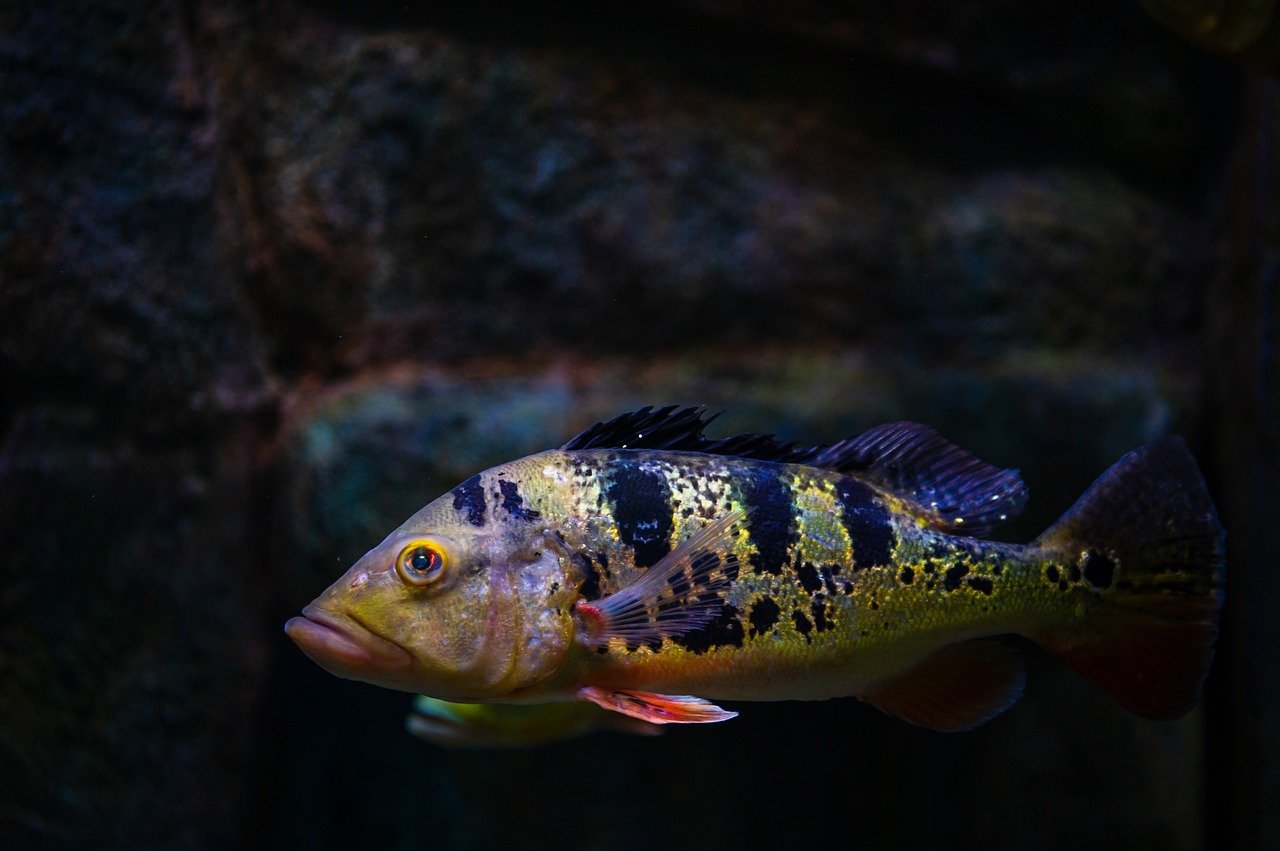
Predictive Analytics for Climate Change
Predictive analytics is becoming a game-changer in understanding and mitigating the impacts of climate change on marine ecosystems. By utilizing complex algorithms and vast datasets, researchers can forecast future conditions and identify potential threats to marine life. Imagine having a crystal ball that reveals not just what is happening now, but what could happen in the future—this is precisely what predictive analytics offers. It allows conservationists to anticipate changes in ocean temperatures, sea levels, and even the distribution of marine species, enabling proactive measures rather than reactive solutions.
One of the critical aspects of predictive analytics is its ability to model various climate scenarios. For instance, researchers can simulate different levels of greenhouse gas emissions and their potential impacts on marine habitats. This modeling helps in understanding how stressors like ocean acidification, warming waters, and habitat loss might interact, leading to a more comprehensive view of the challenges ahead. The insights gained from these models can be invaluable for policymakers and conservationists as they craft strategies to protect vulnerable species and ecosystems.
Moreover, predictive analytics can inform us about the resilience of marine environments. By analyzing historical data, scientists can identify which areas are more likely to withstand climate change impacts and which are at greater risk. This information is crucial for prioritizing conservation efforts. For example, if a particular coral reef shows signs of resilience to rising temperatures, it might be a prime candidate for protection and restoration initiatives. On the flip side, areas predicted to suffer significantly might require urgent intervention.
To illustrate its effectiveness, consider the following table that outlines some of the key predictive analytics applications in marine conservation:
| Application | Description | Impact |
|---|---|---|
| Species Distribution Modeling | Forecasts changes in species habitats due to climate shifts. | Helps in planning conservation areas. |
| Temperature Projections | Predicts future ocean temperatures based on current trends. | Informs about potential coral bleaching events. |
| Sea Level Rise Forecasting | Estimates impacts of rising sea levels on coastal ecosystems. | Guides habitat restoration and management efforts. |
In summary, predictive analytics serves as a vital tool in our fight against climate change, providing the foresight needed to protect marine ecosystems. By understanding potential future scenarios, we can allocate resources more effectively and implement strategies that not only address current issues but also anticipate future challenges. The ocean is a complex, dynamic system, and as we continue to harness the power of predictive analytics, we can better safeguard its health for generations to come.
- What is predictive analytics? Predictive analytics involves using statistical algorithms and machine learning techniques to identify the likelihood of future outcomes based on historical data.
- How does predictive analytics help in marine conservation? It helps forecast changes in marine ecosystems due to climate change, allowing for proactive conservation strategies.
- Can predictive analytics predict species extinction? While it can't predict extinction with absolute certainty, it can highlight at-risk species and inform conservation efforts to protect them.
- What data is used in predictive analytics for marine conservation? Data sources can include satellite imagery, ocean temperature records, species population statistics, and climate models.
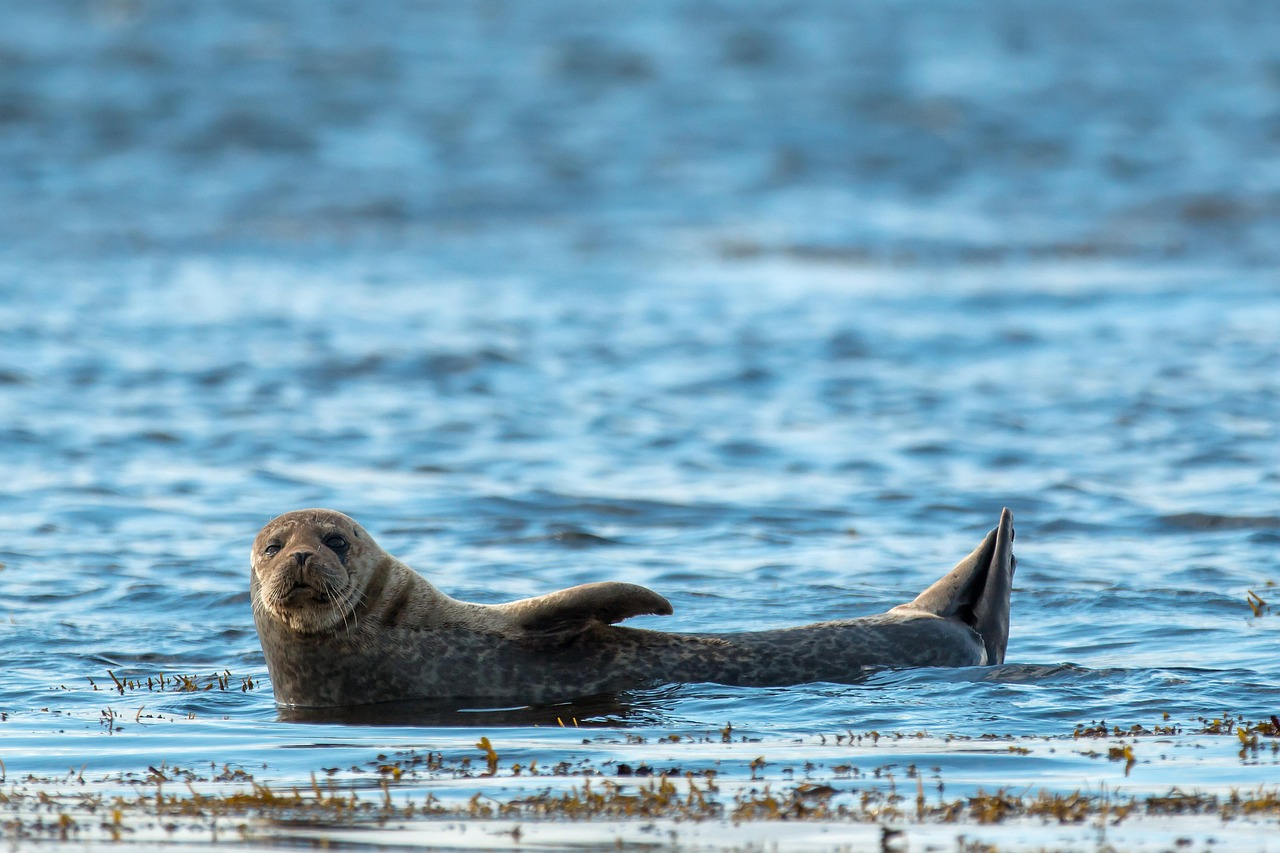
Automated Surveillance Systems
In the realm of marine conservation, are becoming game-changers. Imagine a world where we can monitor the vast oceans without the need for constant human presence. These systems, equipped with underwater cameras and acoustic sensors, provide a means to gather real-time data about marine life and activities beneath the surface. This is not just a technological advancement; it's a revolution in how we protect our oceans.
One of the most significant benefits of these surveillance systems is their ability to track illegal activities, such as poaching and illegal fishing. With the help of advanced algorithms, these systems can analyze patterns in the data they collect, allowing conservationists to respond swiftly to threats. For instance, when an underwater camera detects unusual movements in a protected area, alerts can be sent out, enabling rapid intervention. This proactive approach is crucial in safeguarding vulnerable marine species.
Moreover, the data collected through these systems can be invaluable for scientific research. By continuously monitoring marine ecosystems, researchers can gather insights into fish populations, biodiversity, and the overall health of marine habitats. This information is essential for developing effective conservation strategies and ensuring that our efforts are data-driven and impactful.
To illustrate the effectiveness of automated surveillance systems, consider the following table that outlines their key features and benefits:
| Feature | Benefit |
|---|---|
| Real-time Monitoring | Immediate detection of illegal activities |
| Data Collection | In-depth insights into marine ecosystems |
| Remote Operation | Reduced need for human presence in sensitive areas |
| Automated Alerts | Quick response to threats |
However, while these technologies present exciting opportunities, they also come with challenges. For instance, the deployment of such systems can be costly, and not all regions may have the resources to implement them effectively. Additionally, there are concerns about the privacy implications of surveillance, even in public waters. Striking a balance between monitoring for conservation and respecting privacy is a conversation that needs to happen.
In conclusion, automated surveillance systems are paving the way for a new era in marine conservation. By harnessing the power of technology, we can monitor our oceans more effectively, respond to threats swiftly, and ultimately protect the delicate balance of marine ecosystems. As we look to the future, it's clear that these systems will play a crucial role in our ongoing efforts to safeguard the seas.
- What are automated surveillance systems? Automated surveillance systems are technologies, such as underwater cameras and acoustic sensors, that monitor marine environments in real-time.
- How do these systems help in conservation? They provide immediate data on illegal activities, track marine life, and offer insights for scientific research.
- Are there any challenges associated with these technologies? Yes, challenges include high costs, resource limitations, and privacy concerns.

Biotechnology in Marine Conservation
Biotechnology is emerging as a vital force in the quest to protect our oceans and restore marine ecosystems. By leveraging advanced biological techniques, researchers and conservationists are developing innovative solutions that address some of the most pressing challenges facing marine environments today. From restoring damaged habitats to enhancing species recovery, biotechnology offers a promising avenue for sustainable marine conservation efforts.
One of the most exciting applications of biotechnology in marine conservation is the development of coral restoration techniques. Coral reefs, often referred to as the "rainforests of the sea," are home to an incredible diversity of marine life. However, they are under severe threat from climate change, pollution, and overfishing. To combat this, scientists are employing methods such as coral farming and genetic modification. Coral farming involves cultivating corals in nurseries before transplanting them back to their natural habitats, while genetic modification seeks to enhance the resilience of corals against environmental stressors. These techniques not only aim to revive dying reefs but also help maintain the biodiversity that is crucial for healthy ocean ecosystems.
Another fascinating area of research is the study of marine microbes. These tiny organisms play a significant role in nutrient cycling and bioremediation, which is the process of using living organisms to clean up contaminated environments. By harnessing the power of marine microbes, scientists can develop strategies to improve water quality and restore balance to marine ecosystems. For instance, certain microbes can break down pollutants, making them invaluable in efforts to rehabilitate polluted waters.
To illustrate the impact of biotechnology on marine conservation, consider the following table that summarizes key biotechnological approaches and their benefits:
| Biotechnological Approach | Benefits |
|---|---|
| Coral Farming | Restores coral populations and enhances biodiversity. |
| Genetic Modification | Increases resilience of corals to climate change and disease. |
| Microbial Bioremediation | Cleans up pollutants and improves water quality. |
| Habitat Restoration Techniques | Rebuilds critical habitats, supporting marine life recovery. |
As we explore the potential of biotechnology in marine conservation, it becomes clear that these innovative approaches are not just about saving individual species or habitats. They represent a holistic strategy aimed at restoring the intricate web of life that exists within our oceans. By investing in these technologies and fostering collaborations between scientists, conservationists, and local communities, we can create a sustainable future for our oceans.
In conclusion, the intersection of biotechnology and marine conservation is a rapidly evolving field that holds great promise for the health of our oceans. As we continue to face environmental challenges, embracing these advancements will be crucial in ensuring the survival of marine ecosystems for generations to come.
- What is biotechnology in marine conservation? Biotechnology in marine conservation refers to the use of biological techniques and processes to protect and restore marine ecosystems.
- How does coral farming help marine conservation? Coral farming helps by cultivating corals in controlled environments, allowing for their growth and eventual transplantation to damaged reefs, thus aiding in their recovery.
- What role do marine microbes play in ocean health? Marine microbes are essential for nutrient cycling and can help clean up pollutants, making them vital for maintaining healthy ocean ecosystems.
- Can genetic modification be used safely in marine conservation? Yes, when conducted responsibly, genetic modification can enhance the resilience of marine species, such as corals, to environmental stressors.
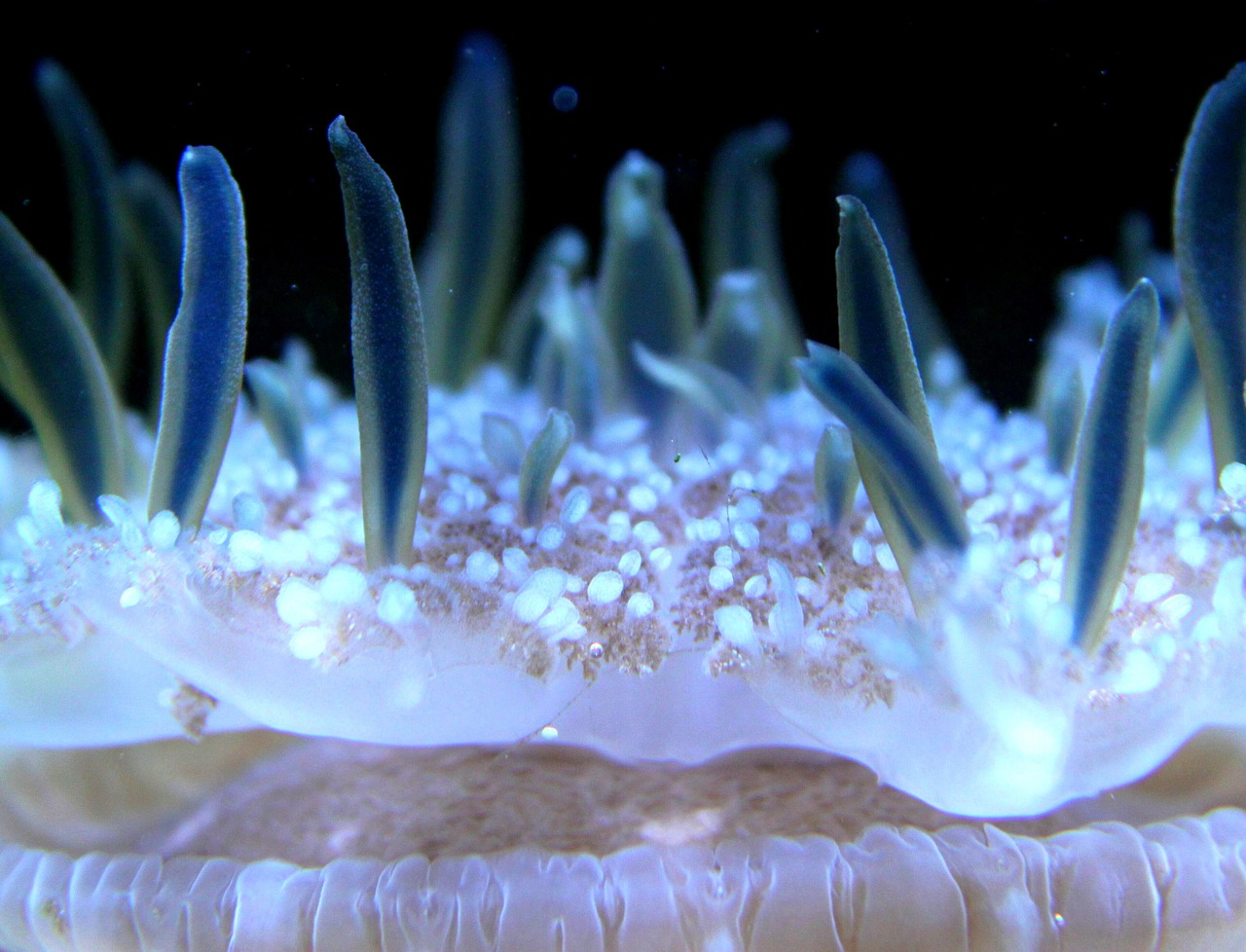
Coral Restoration Techniques
Coral reefs, often referred to as the "rainforests of the sea," are among the most biodiverse ecosystems on the planet. However, they are facing unprecedented threats from climate change, pollution, and overfishing. To combat these challenges, innovative have emerged, aiming to enhance the resilience of these vital ecosystems. One of the most promising methods is coral farming, which involves cultivating corals in controlled environments before transplanting them back into their natural habitats. This technique not only aids in the recovery of damaged reefs but also helps to increase genetic diversity, making corals more resilient to environmental stressors.
Another groundbreaking approach is genetic modification. Scientists are exploring ways to enhance coral species that can withstand higher temperatures and increased acidity levels. By identifying specific genes that confer resilience, researchers can potentially create "super corals" that are better equipped to survive in a changing ocean. This technique, while controversial, holds immense potential for the future of coral conservation.
Moreover, assisted gene flow is being utilized to introduce resilient coral species into areas where local populations are struggling. This method involves moving genetically diverse corals from healthy areas to degraded ones, thereby boosting the genetic pool and improving the chances of survival for the new population. The success of these techniques can be seen in various pilot projects around the world, where restored reefs are showing signs of recovery and increased biodiversity.
In addition to these methods, coral nurseries have become a vital component of restoration efforts. These nurseries allow for the growth of corals in a protected environment, providing a safe space for them to thrive before being reintroduced to the wild. The use of artificial structures such as reef balls and frames also supports coral growth by providing a substrate for attachment. This not only helps in the restoration process but also enhances the habitat for a myriad of marine species.
As we delve deeper into coral restoration techniques, it becomes evident that collaboration is key. Scientists, conservationists, and local communities must work together to implement these strategies effectively. By combining traditional knowledge with cutting-edge technology, we can create a multifaceted approach to coral conservation that addresses both immediate needs and long-term sustainability.
In conclusion, the future of coral restoration lies in a blend of innovative techniques and community engagement. As we continue to explore the potential of coral farming, genetic modification, and nursery systems, it is crucial to remain vigilant and proactive in our conservation efforts. The health of our oceans depends on the success of these initiatives, and by prioritizing coral restoration, we can help ensure that these magnificent ecosystems endure for generations to come.
- What are coral reefs? Coral reefs are underwater ecosystems characterized by reef-building corals. They provide habitat for a diverse range of marine life.
- Why are coral reefs important? Coral reefs support marine biodiversity, protect coastlines from erosion, and contribute to the livelihoods of millions of people worldwide.
- What threats do coral reefs face? Major threats include climate change, ocean acidification, pollution, and destructive fishing practices.
- How can I help in coral conservation? You can participate in local conservation efforts, support sustainable seafood practices, and educate others about the importance of coral reefs.
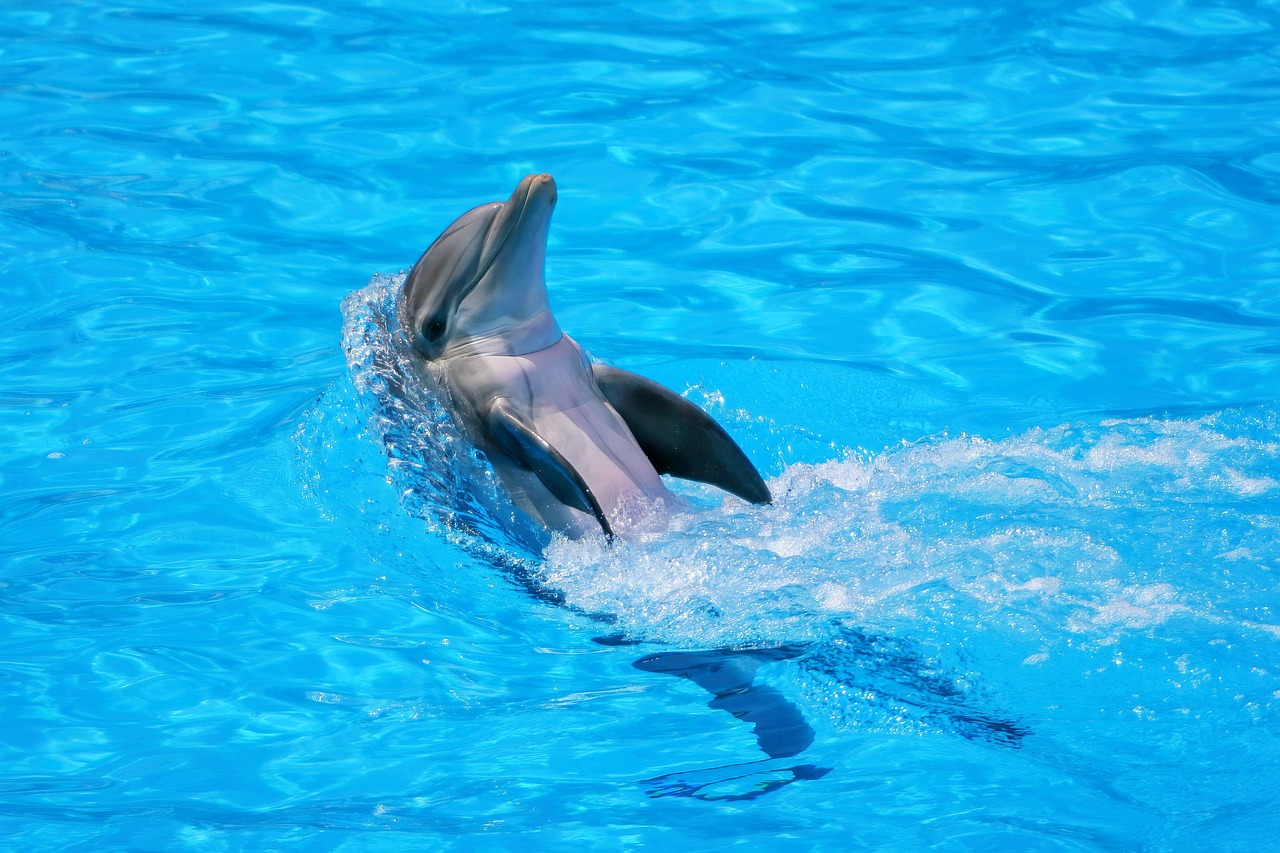
Marine Microbial Technologies
Marine microbial technologies are at the forefront of innovative solutions for restoring and maintaining the health of our ocean ecosystems. These technologies harness the power of microorganisms—tiny life forms that play a monumental role in nutrient cycling, bioremediation, and overall marine health. Imagine these microbes as the unsung heroes of the ocean, tirelessly working behind the scenes to keep our waters clean and ecosystems thriving. They are essential not just for their roles in the food web, but also for their ability to break down pollutants and recycle nutrients, making them invaluable allies in conservation efforts.
Research into marine microbes has revealed their potential in various applications, particularly in bioremediation. This is the process where living organisms are used to remove or neutralize contaminants from a polluted environment. For example, certain bacteria can degrade oil spills, breaking down the hydrocarbons into harmless byproducts. By employing these microbes, we can significantly reduce the impact of pollution on marine habitats and promote recovery in affected areas.
Furthermore, marine microbial technologies are being explored for their role in enhancing water quality. With the rise of harmful algal blooms, understanding the dynamics of microbial communities becomes crucial. For instance, some microorganisms can outcompete harmful algae for nutrients, effectively controlling their growth. This natural method of pest control not only reduces the need for chemical interventions but also supports a balanced marine ecosystem.
To illustrate the impact of marine microbial technologies, consider the following table that highlights key applications:
| Application | Description | Benefits |
|---|---|---|
| Bioremediation | Using microbes to degrade pollutants, such as oil spills. | Reduces environmental impact and accelerates recovery. |
| Nutrient Cycling | Microbes help recycle nutrients, supporting marine life. | Maintains ecosystem balance and promotes biodiversity. |
| Harmful Algal Bloom Control | Microbes compete with harmful algae for nutrients. | Reduces the occurrence of toxic blooms, improving water quality. |
Moreover, the exploration of marine microbial technologies is not just limited to environmental applications. Researchers are also investigating their potential in pharmaceuticals and biotechnology. The unique metabolites produced by marine microbes can lead to the development of new drugs and treatments, showcasing yet another layer of their importance. It’s like finding hidden treasures in the ocean, where each microbe could be a key to a breakthrough in medicine.
As we continue to delve deeper into the world of marine microbes, it’s clear that their significance in marine conservation cannot be overstated. By leveraging these tiny organisms, we can create more sustainable practices that not only protect our oceans but also enhance their resilience against the myriad of challenges they face today. The future of marine conservation may very well hinge on our understanding and utilization of these remarkable microbial technologies.
- What are marine microbial technologies? Marine microbial technologies refer to the use of microorganisms in various applications aimed at restoring and maintaining ocean health, including bioremediation and nutrient cycling.
- How do microbes help in bioremediation? Microbes break down pollutants, such as oil, into harmless byproducts, significantly reducing environmental impacts from spills and other contaminants.
- Can marine microbes improve water quality? Yes, certain microbes can outcompete harmful algae for nutrients, helping to control algal blooms and improve overall water quality.
- Are there any medical applications for marine microbes? Yes, marine microbes produce unique metabolites that can lead to the development of new drugs and treatments in biotechnology and pharmaceuticals.
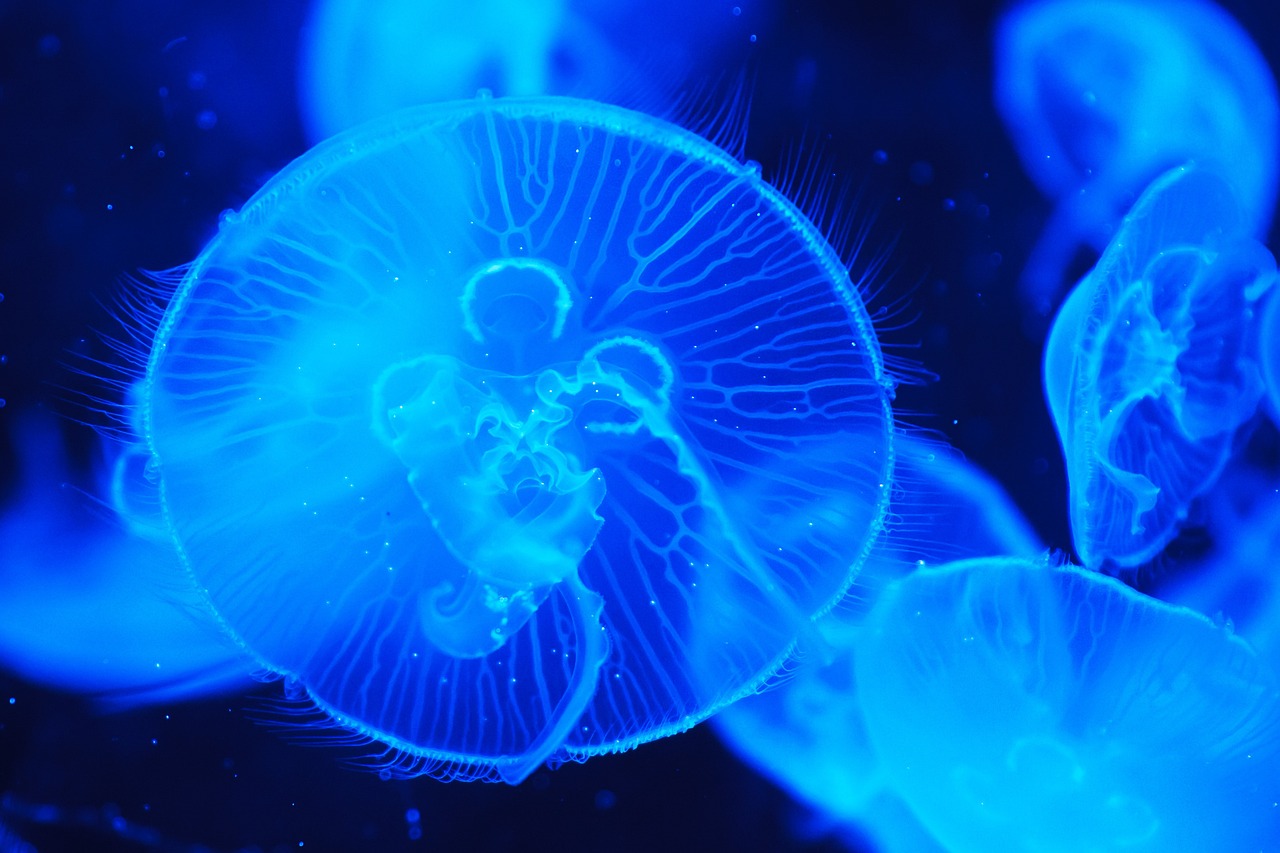
Community Engagement and Technology
Engaging local communities through technology is not just a trend; it's a vital component for successful marine conservation. Imagine a world where everyone, from seasoned scientists to weekend beachgoers, plays a role in protecting our oceans. This is becoming increasingly possible thanks to advancements in technology that empower individuals to take action. Citizen science initiatives and mobile applications are at the forefront of this movement, enabling people to contribute to the monitoring and protection of marine resources.
Citizen science platforms have emerged as a powerful tool in the conservation toolkit. These platforms allow the public to collect data, report sightings of marine species, and even monitor pollution levels. By harnessing the collective efforts of everyday people, researchers can gather vast amounts of data that would be impossible to collect alone. For instance, a simple app can allow users to upload photos of marine life, contributing to databases that track biodiversity and ecosystem health. This not only aids researchers but also fosters a sense of ownership and responsibility among community members.
Moreover, educational technologies are playing a crucial role in raising awareness about marine conservation. Imagine donning a virtual reality headset and diving into a vibrant coral reef, witnessing the beauty of marine life up close. These immersive experiences can profoundly impact how individuals perceive and understand ocean ecosystems. Interactive apps can simulate the effects of pollution or climate change on marine habitats, making the issues tangible and relatable. This kind of engagement transforms passive observers into active participants in conservation efforts.
Additionally, community engagement through technology can lead to more effective conservation strategies. When local communities are equipped with the right tools and knowledge, they can advocate for policies that protect their marine environments. For example, mobile apps that provide real-time data on fish populations can help local fishermen make informed decisions, promoting sustainable fishing practices. This synergy between technology and community involvement creates a more resilient approach to marine conservation.
In conclusion, the intersection of community engagement and technology is revolutionizing marine conservation. By empowering individuals to take part in data collection and education, we can foster a collective effort that significantly impacts our oceans. The future of marine conservation is bright, and with the right tools, everyone can contribute to protecting our blue planet.
- What is citizen science? Citizen science refers to public participation in scientific research, allowing individuals to contribute to data collection and analysis.
- How can technology help in marine conservation? Technology can facilitate data collection, enhance public awareness, and promote community engagement in conservation efforts.
- What role do mobile apps play in marine conservation? Mobile apps can provide tools for monitoring marine resources, reporting environmental issues, and educating users about marine ecosystems.
- Can anyone participate in citizen science initiatives? Yes! Citizen science initiatives are designed to be inclusive, allowing people from all backgrounds to contribute.
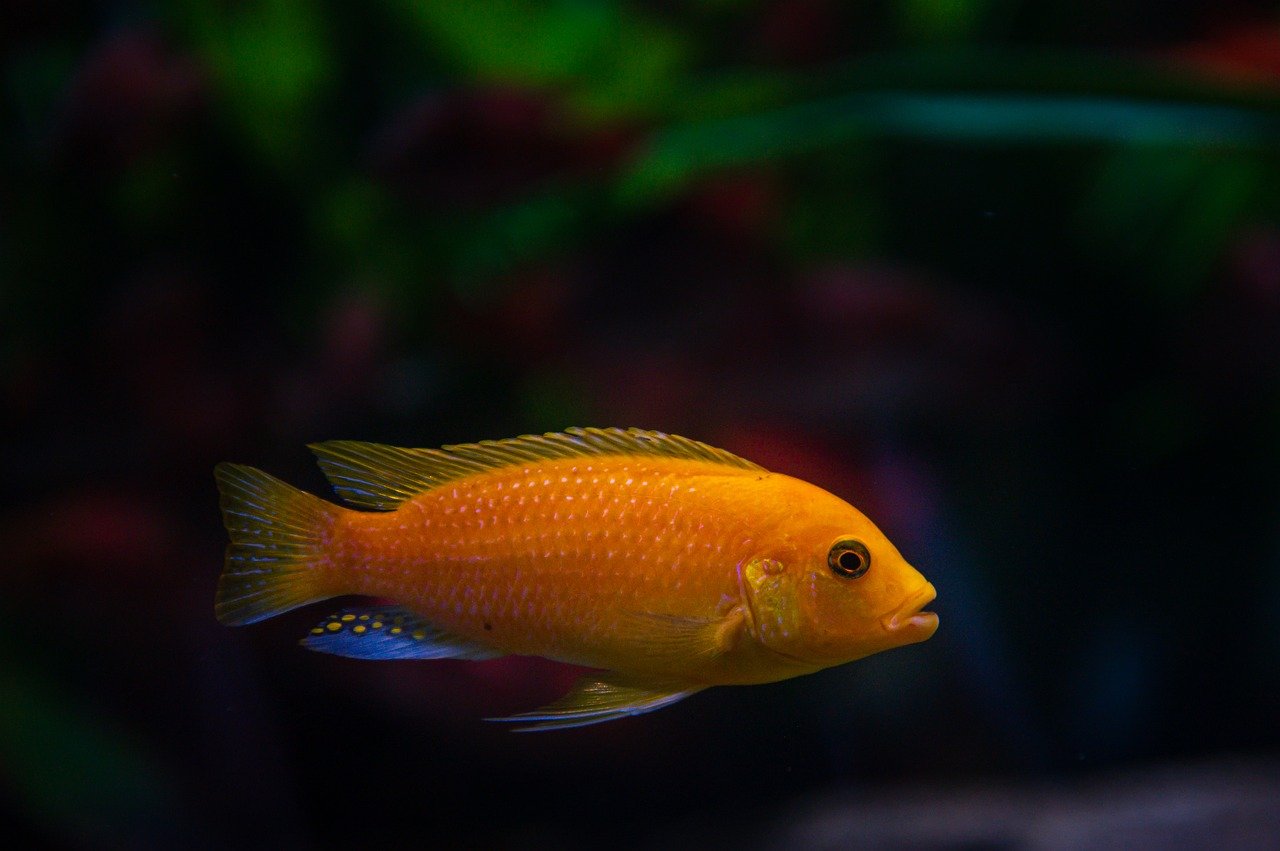
Citizen Science Platforms
Citizen science platforms are transforming the way we approach marine conservation by empowering everyday individuals to contribute to vital research and monitoring efforts. Imagine a world where anyone with a smartphone can become a marine scientist, collecting data that helps protect our oceans. These innovative platforms not only facilitate data collection but also enhance public awareness and engagement in conservation efforts.
One of the most exciting aspects of citizen science is its ability to harness the collective power of communities. By utilizing mobile apps and online platforms, people can document marine life, report sightings of endangered species, and even track pollution levels. This grassroots approach fosters a sense of ownership and responsibility towards local marine environments, encouraging individuals to become stewards of the ocean.
For instance, platforms like iNaturalist and Marine Debris Tracker allow users to upload photographs and data about marine organisms and debris, respectively. This information is invaluable for researchers who rely on large datasets to understand trends and patterns in marine ecosystems. The data collected by citizen scientists can be used to:
- Monitor biodiversity and species distribution
- Identify critical habitats
- Assess the impact of human activities on marine life
Moreover, these platforms often include educational resources that inform users about marine ecosystems, conservation challenges, and the importance of preserving marine biodiversity. By engaging the public in this way, citizen science not only contributes to scientific knowledge but also cultivates a deeper appreciation for the ocean and its inhabitants.
However, it’s important to acknowledge that citizen science is not without its challenges. Data quality can vary significantly, and ensuring that volunteers are adequately trained to collect accurate information is crucial. To address this, many platforms provide training modules and guidelines to help participants understand best practices in data collection. This blend of technology and community engagement is paving the way for a more inclusive approach to marine conservation.
In conclusion, citizen science platforms are revolutionizing marine conservation by bridging the gap between scientists and the public. They empower individuals to make meaningful contributions while fostering a culture of stewardship and awareness. As we continue to face unprecedented challenges in our oceans, these platforms will play an essential role in driving collective action and ensuring the long-term health of marine ecosystems.
Q1: What is citizen science?
Citizen science involves the public participating in scientific research, contributing data, and helping to solve real-world problems, particularly in areas like environmental monitoring and conservation.
Q2: How can I get involved in citizen science for marine conservation?
You can get involved by downloading citizen science apps, participating in local conservation projects, and contributing data through platforms like iNaturalist or Marine Debris Tracker.
Q3: What are the benefits of citizen science?
Citizen science enhances data collection, raises public awareness, fosters community engagement, and can lead to more effective conservation strategies.
Q4: Are there any training resources available for citizen scientists?
Yes, many citizen science platforms offer training materials, guidelines, and tutorials to help volunteers learn how to collect and submit data accurately.

Educational Technologies for Awareness
Educational technologies are transforming the way we engage with marine conservation and raising awareness about the critical state of our oceans. Imagine putting on a pair of virtual reality goggles and instantly finding yourself underwater, swimming alongside majestic sea turtles and vibrant coral reefs. This immersive experience not only captivates the imagination but also fosters a deeper emotional connection to marine ecosystems. By leveraging cutting-edge tools, we can create powerful learning experiences that inspire action and stewardship.
One of the most exciting developments in this realm is the rise of interactive apps designed to educate users about marine life and conservation efforts. These applications often feature engaging content, such as games, quizzes, and virtual tours of marine environments. Users can explore the intricacies of ocean ecosystems, learn about the threats they face, and discover how their actions can make a difference. For example, an app might allow users to track the migration patterns of endangered species or simulate the impact of pollution on marine habitats. This hands-on approach makes learning fun and memorable, ensuring that the message of conservation resonates long after the experience ends.
Moreover, educational technologies are not just for individuals; they can also be powerful tools for communities. Workshops and webinars utilizing interactive platforms enable local groups to come together, share knowledge, and discuss conservation strategies. These collaborative efforts often lead to community-driven initiatives that can have a significant impact on local marine environments. By empowering communities with information and skills, we create a network of informed advocates who are passionate about protecting our oceans.
To illustrate the importance of these educational tools, consider the following table that highlights various technologies and their benefits for marine conservation awareness:
| Technology | Description | Benefits |
|---|---|---|
| Virtual Reality (VR) | Immersive simulations of underwater environments. | Enhances emotional connection; promotes empathy for marine life. |
| Interactive Apps | Mobile applications that educate users through games and quizzes. | Engages users; fosters long-term learning and action. |
| Webinars and Workshops | Online sessions that allow for community engagement and discussion. | Builds local networks; encourages collaborative conservation efforts. |
As we continue to innovate and develop new educational technologies, the potential for raising awareness about marine conservation is limitless. By integrating fun, interactive, and informative elements into learning, we can inspire a new generation of ocean advocates. It's not just about saving the fish and corals; it's about fostering a sense of responsibility and stewardship toward our planet's most precious resource. With every new technology, we are one step closer to ensuring that future generations will inherit a thriving ocean, rich in biodiversity and health.
- What are educational technologies in marine conservation? These are tools and platforms that use innovative methods, like virtual reality and interactive apps, to educate people about marine ecosystems and conservation efforts.
- How can I get involved in marine conservation education? You can participate in local workshops, download educational apps, or engage in citizen science projects that focus on marine life.
- Why is raising awareness important for marine conservation? Awareness leads to informed action, which is crucial for protecting marine ecosystems and addressing threats like pollution and overfishing.
Frequently Asked Questions
- What are some emerging technologies in marine monitoring?
Emerging technologies such as drones, underwater robots, and satellite imagery are at the forefront of marine monitoring. These advanced tools help gather extensive data about marine ecosystems, enabling researchers to make informed decisions about conservation efforts.
- How is artificial intelligence used in marine conservation?
Artificial intelligence (AI) plays a crucial role in analyzing vast amounts of marine data. By identifying patterns and predicting trends, AI enhances conservation strategies, helping to protect marine environments more effectively.
- What is machine learning's role in predicting fish populations?
Machine learning algorithms are utilized to predict fish populations and assess habitat health. This technology provides critical insights that support sustainable fishing practices and habitat restoration, ensuring healthier oceans.
- How can biotechnology aid in coral restoration?
Biotechnology contributes to coral restoration through techniques like coral farming and genetic modification. These innovative methods aim to boost coral resilience against climate change, which is vital for preserving marine biodiversity.
- What is citizen science, and how does it contribute to marine conservation?
Citizen science involves engaging the public in data collection and conservation efforts. Through platforms that facilitate community involvement, individuals can actively participate in monitoring marine resources, fostering greater awareness and stewardship.
- How can educational technologies raise awareness about marine conservation?
Innovative educational technologies, like virtual reality and interactive apps, create immersive experiences that educate users about ocean ecosystems. These tools increase awareness of the importance of marine conservation and encourage proactive involvement.
- What challenges do emerging marine conservation technologies face?
While emerging technologies offer significant benefits, they also face challenges such as high costs, the need for specialized training, and potential data privacy concerns. Addressing these issues is crucial for the successful implementation of these technologies.

